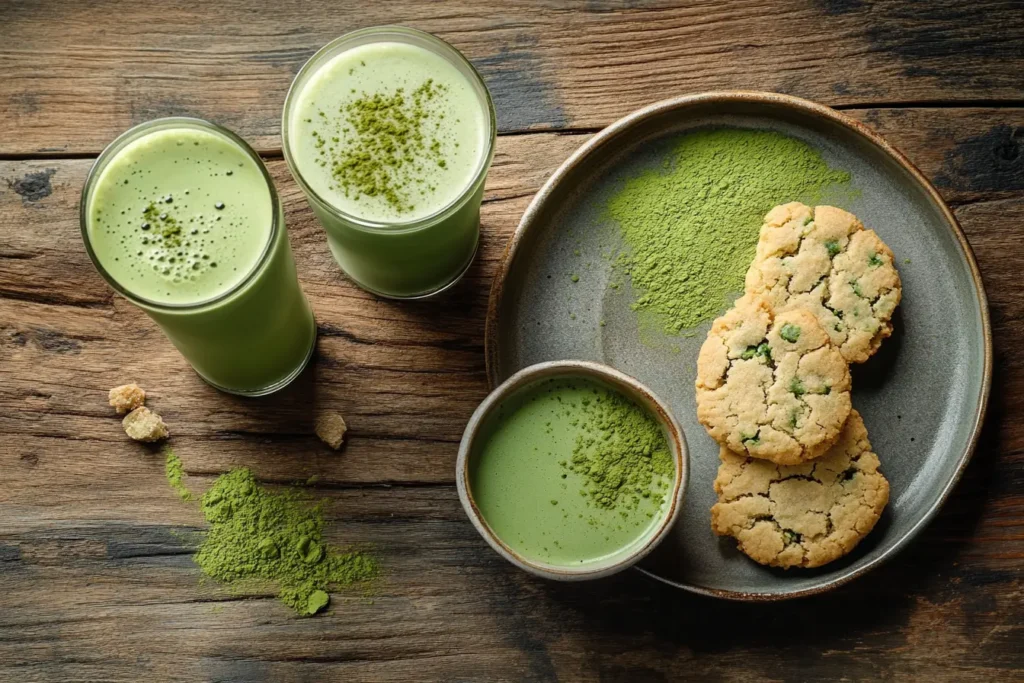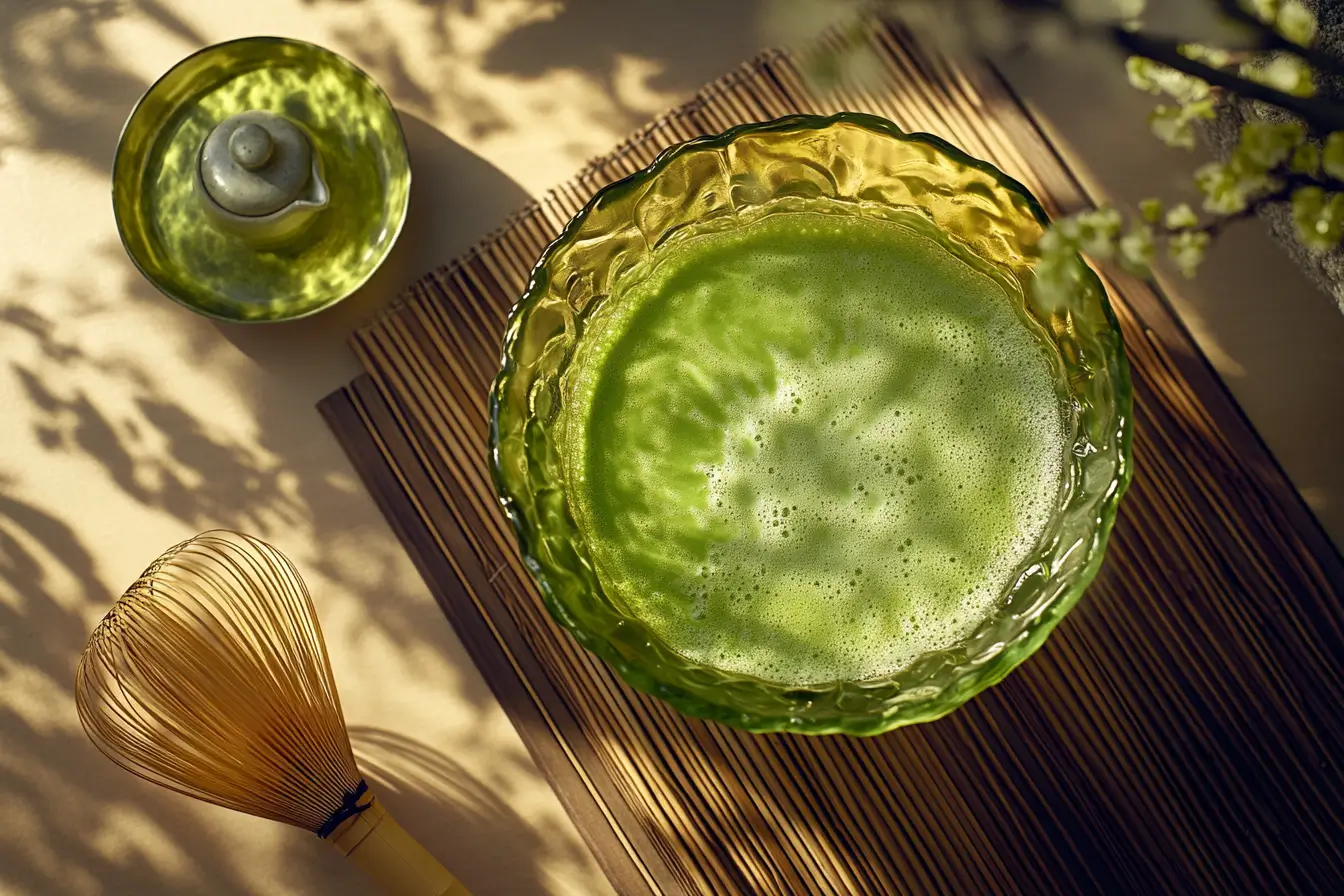Introduction
Matcha has become a beloved staple for tea enthusiasts and foodies worldwide, thanks to its vibrant green color, earthy flavor, and remarkable health benefits. Whether you’re starting your morning with a frothy cup or using matcha in recipes, understanding the preparation process is essential to enjoying its full potential. But here’s a question many beginners ask: Does hot water destroy matcha?
The answer lies in how water temperature impacts matcha’s delicate components. Boiling water can scorch the powder, ruin its flavor, and degrade its nutritional value. By preparing matcha at the right temperature, you can preserve its sweetness, umami flavors, and bright green hue. This article dives into why water temperature makes such a big difference and offers tips to help you perfect your matcha-making skills.
Does Hot Water Destroy Matcha? Understanding the Basics
Matcha is a finely powdered green tea derived from specially grown and harvested tea leaves. Unlike regular tea, where leaves are steeped and discarded, matcha involves consuming the entire leaf, making it a nutritional powerhouse. Its distinct preparation and health benefits have made it increasingly popular among tea lovers and health-conscious individuals.
Different Grades of Matcha
Matcha is available in two main grades, each suited for specific purposes:
- Ceremonial Grade Matcha: This is the highest quality matcha, with a vibrant green color and smooth, sweet flavor. It’s ideal for traditional tea preparation.
- Culinary Grade Matcha: Slightly more bitter, this grade is perfect for lattes, smoothies, and desserts. It pairs well with sweet or creamy recipes.
Proper preparation is critical for both grades, ensuring you get the most out of matcha’s health benefits and rich flavor profile. But does hot water destroy matcha? Let’s find out.
The Role of Water Temperature in Matcha Preparation

Water temperature is crucial when preparing matcha. Boiling water, often used for other types of tea, can actually ruin matcha’s delicate balance of flavor and nutrients. So, does hot water destroy matcha? The short answer is yes—if it’s too hot.
What Happens When You Use Boiling Water for Matcha?
- Flavor Changes: High temperatures break down L-theanine, an amino acid responsible for matcha’s sweet and umami notes. This leaves behind a bitter taste that can overwhelm your drink.
- Nutritional Loss: Boiling water destroys catechins and antioxidants, reducing matcha’s ability to fight free radicals.
- Color Degradation: The bright green chlorophyll in matcha is sensitive to heat and can turn dull or yellowish when exposed to boiling water.
Using water that’s too hot increases oxidation, further altering the taste and appearance of matcha. To avoid these issues, you need to understand the ideal brewing temperature for matcha.
Matcha Water Temperature: Tips for Perfect Preparation
The sweet spot for preparing matcha is between 70°C and 80°C (158°F to 176°F). This temperature range protects matcha’s delicate properties while bringing out its best flavors.
Why This Temperature Works
- Preserves Nutrients: At 70-80°C, antioxidants and amino acids remain intact, maximizing matcha’s health benefits.
- Balances Flavor: This range highlights matcha’s natural sweetness and umami, avoiding the bitterness caused by higher temperatures.
- Maintains Appearance: Chlorophyll stays vibrant, keeping matcha’s bright green color.
Tools for Temperature Control
If you’re unsure how to control water temperature, these tools can help:
- Temperature-Controlled Kettles: These kettles let you set an exact temperature for consistent results.
- Thermometers: Use a kitchen thermometer to check the water temperature manually.
- Cooling Techniques: Pour boiling water into a different container and let it cool for 1-2 minutes before adding matcha.
The right temperature makes a noticeable difference in every sip, so investing in these tools is worthwhile.
Cooling Techniques for Matcha Preparation
For those who don’t have temperature-controlled equipment, simple methods can help cool boiling water to the right temperature for matcha.
Practical Cooling Tips
- Let It Rest: After boiling water, let it sit for 2-3 minutes before using it for matcha. This allows the temperature to drop naturally.
- Transfer Between Containers: Pour water into a cold vessel to cool it down more quickly. This works well if you’re in a hurry.
- Add Cold Water: Mix a small amount of cold water with boiled water to achieve the desired temperature instantly.
Using these techniques ensures that your matcha retains its vibrant green color and smooth flavor.
Effects of Hot Water on Matcha’s Flavor Profile

So, what happens when you use boiling water for matcha? One major consequence is the change in flavor. Instead of the rich, creamy taste matcha is known for, you’ll end up with a drink that’s harsh and overly bitter.
Why Does Matcha Taste Bitter?
When water is too hot, it breaks down catechins, which are responsible for matcha’s mild bitterness. The heat also destroys L-theanine, leaving a sharp, unpleasant taste.
Importance of Whisking
Proper whisking can help distribute matcha powder evenly, creating a frothy texture that enhances its flavor. Use a traditional bamboo whisk (chasen) and whisk in an “M” or “W” motion until you achieve a smooth, creamy consistency.
Flavor Comparison
| Water Temperature | Taste |
|---|---|
| 70°C (158°F) | Smooth, sweet, balanced |
| 100°C (212°F) | Bitter, harsh, unpleasant |
If you’ve ever wondered why your matcha tastes off, water temperature could be the culprit.
Visual and Nutritional Changes with Boiling Water
Matcha’s appearance and health benefits are also compromised when exposed to boiling water.
Impact on Appearance
- Optimal Temperature: Produces a bright, vibrant green color.
- Boiling Water: Leads to a dull, yellowish hue, making the tea look unappealing.
Nutritional Degradation
The antioxidants and amino acids that make matcha a superfood are sensitive to heat. High temperatures can destroy these compounds, reducing their ability to support your health.
Preserving matcha’s visual appeal and nutritional value requires careful attention to water temperature.
- Explore the versatility of matcha as a baking ingredient and why preparation matters.
- Understand how water temperature impacts matcha’s flavor when paired with chocolate.
Best Temperature for Matcha: Why It Matters
Matcha is celebrated for its numerous health benefits, including its ability to boost metabolism, improve focus, and provide antioxidants. But does hot water destroy matcha’s nutrients? Yes, if it’s too hot.
Key Nutrients in Matcha
- Catechins: Powerful antioxidants that fight free radicals.
- L-Theanine: Promotes relaxation and focus.
- Vitamins: Support overall health and immunity.
Preserving Nutrients
To retain these benefits, always prepare matcha with water between 70-80°C. This ensures that the nutrients remain intact, giving you a drink that’s as healthy as it is delicious.
Common Mistakes When Using Hot Water for Matcha
Even seasoned tea drinkers can occasionally make mistakes when preparing matcha. However, by being mindful of the process, you can avoid some common pitfalls. For instance, here are a few mistakes to watch out for and tips to help you steer clear of them:
- Using Boiling Water: This is the fastest way to ruin matcha’s flavor and health benefits.
- Skipping Cooling: Failing to let water cool results in scorched matcha powder.
- Improper Whisking: Clumps of matcha can form if the powder isn’t whisked properly.
By addressing these mistakes, you can improve the quality of your matcha experience.
Find out how water temperature and preparation techniques affect matcha’s appearance in cookies.
Alternative Preparations for Matcha
Matcha isn’t just for traditional tea. You can enjoy it in a variety of creative ways:
- Cold-Brew Matcha: Perfect for hot days, this method involves mixing matcha with cold water for a refreshing drink.
- Matcha Lattes: Combine matcha with milk or plant-based alternatives for a creamy treat.
- Matcha Desserts: Add matcha to recipes like cookies, brownies, or cakes for a unique twist.
Discover how proper preparation preserves matcha’s flavor in desserts like matcha brownies.
Learn how the right matcha preparation enhances baked goods like these fudgy matcha brownies.

Honoring Matcha’s Tradition and Craftsmanship
Matcha preparation is deeply rooted in Japanese culture, where mindfulness and precision are emphasized. Using traditional tools like a chasen (bamboo whisk) and chawan (tea bowl) enhances the experience, connecting you to the artistry of matcha-making.
Tips for Beginners: Perfecting Your Matcha Brew
If you’re new to matcha, follow these simple steps for a perfect cup:
- Sift 1-2 teaspoons of matcha powder into a bowl.
- Heat water to 70-80°C and add a small amount to the matcha.
- Whisk vigorously in an “M” motion until frothy.
- Add more water to taste and enjoy immediately.
With practice, you’ll develop the skills needed to prepare matcha like a pro.
Conclusion
Does hot water destroy matcha? Absolutely, especially if it’s too hot. However, by preparing matcha at the ideal temperature range of 70-80°C, you can not only preserve its vibrant color but also maintain its smooth flavor and incredible health benefits. Furthermore, whether you’re enjoying matcha as a tea or incorporating it into recipes, proper preparation is essential for making the most of this beloved green tea powder.
Experiment with your matcha techniques and try creative recipes like “Learn how the right matcha preparation enhances baked goods like these fudgy matcha brownies.”
FAQs
Can you put matcha in hot water?
Yes, but make sure the water is not boiling. Instead, aim to keep it between 70-80°C, as this ensures the best results. Moreover, maintaining this temperature range preserves the flavor, color, and nutrients of matcha, making your tea smooth and enjoyable.
Does heat ruin matcha?
Yes, excessive heat can indeed ruin matcha, not only by making it bitter but also by significantly degrading its nutrients. Consequently, it’s essential to use the right water temperature to preserve both its flavor and health benefits.
Does matcha go bad in heat?
Prolonged exposure to heat, unfortunately, can significantly degrade matcha’s quality. As a result, it affects not only its vibrant color but also its delicate flavor and nutritional value. Therefore, it is crucial to handle matcha carefully to maintain its original characteristics.
Can you whisk matcha in hot water?
Yes, but it is crucial to use water at the right temperature (70-80°C) to not only prevent bitterness but also to preserve its nutrients. Additionally, this temperature range helps maintain matcha’s natural sweetness and vibrant color, ensuring a more enjoyable experience overall.

